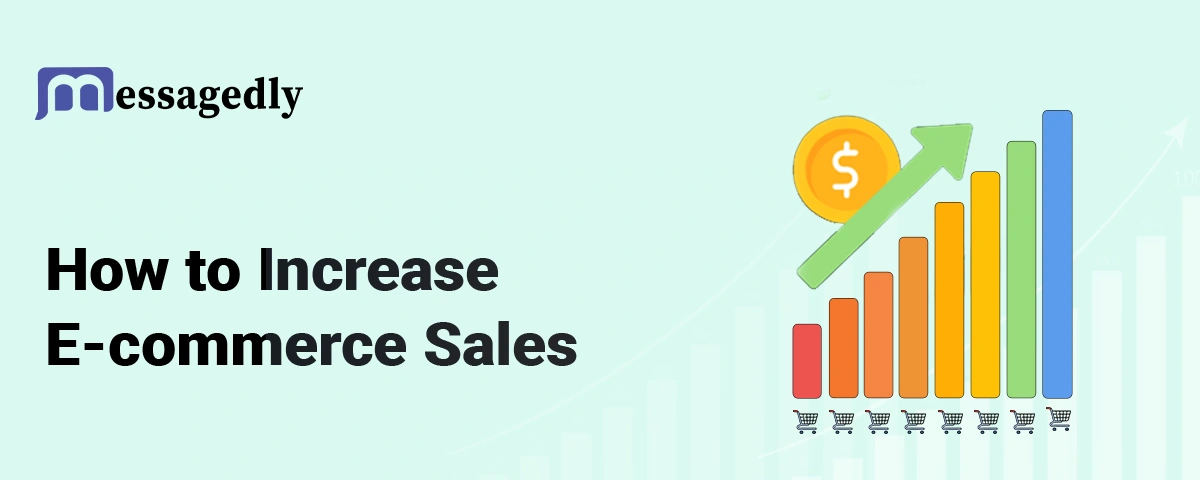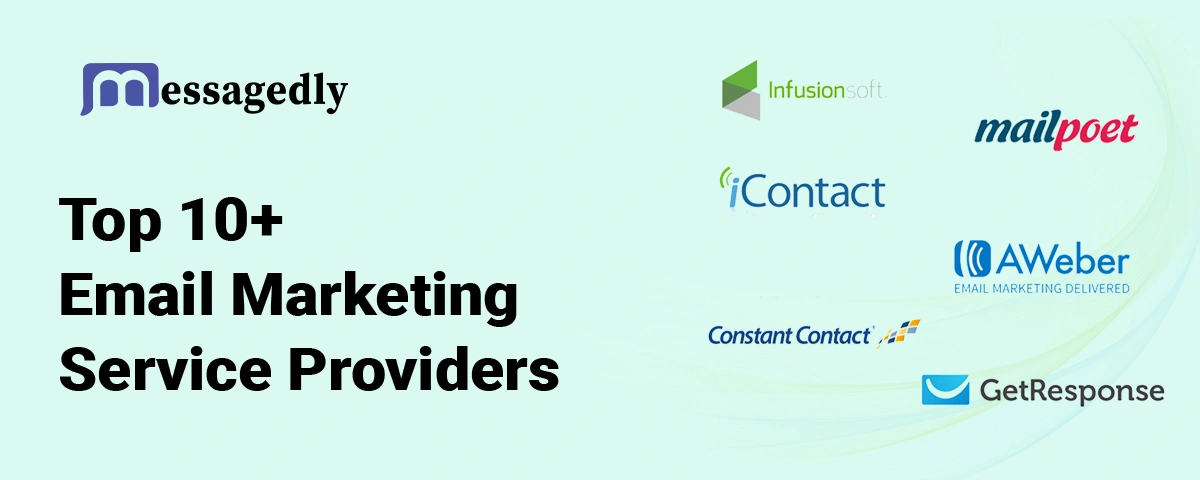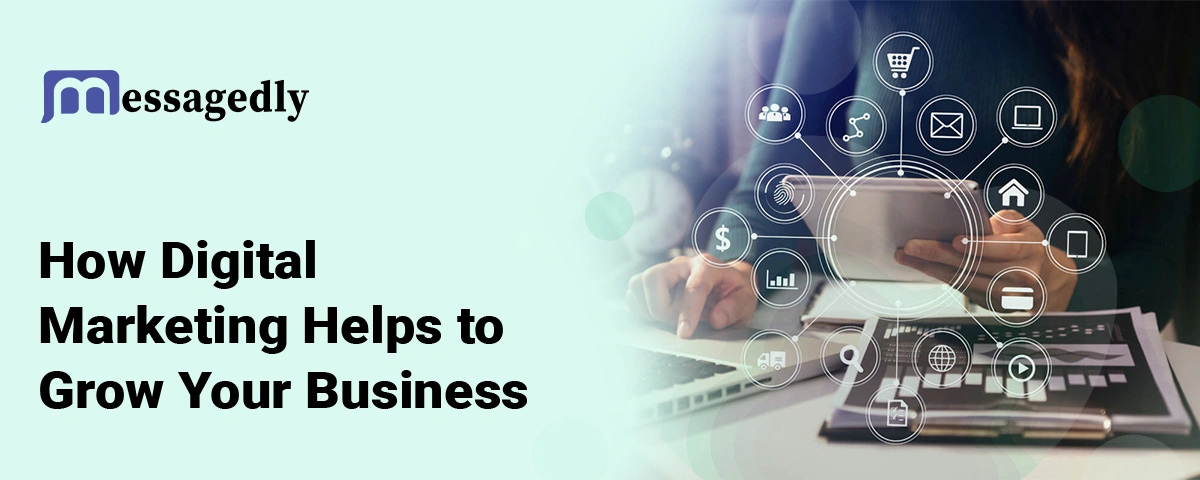
Are you also finding it difficult to increase ecommerce Sales? Setting up an online store or business is quite easy in today’s digital era. However, what many e-commerce businesses lack is running one successfully.
You might also have set up an incredible e-commerce shop. You’ve even selected the most trending products, created an outstanding website design, and are ready for sales to begin.
But so far, the outcomes are not as great as it supposed to be.
Setting up the e-commerce store is the only first step to establishing a successful e-commerce business — now you are required to establish effective strategies to increase your e-commerce sales.
Increasing e-commerce sales isn’t as complex as you might think. It certainly just needs to produce your internal capability to meet the demand. In short, it is just a mixture of useful strategies and working as a team to assist you achieve your revenue objectives. Boosting the one can help you earn more money in your bag and a more long-lasting outlook for your business.
Ready, to take your business sales high with rocket speed? In this article, we guide you on how you can increase your sales and strategies that will help you achieve the one in 2025.
What is an E-commerce?
E-commerce is a term that refers to an online marketplace where consumers purchase products and services. This business involves selling products and services through apps, a brand’s website, social media, or an online marketplace.
Examples of e-commerce businesses are hotels that allow customers to reserve a room through their official websites or clothing and footwear firms that operate both as brick-and-mortar stores and online stores. There might be small or large companies that can engage in e-commerce and can fit most business categories such as business-to-consumer and business-to-business.
Some firms may only operate online if they do not have a tangible shop, while other firms use in-store shoppers alongside online traders. Concerning the nature of your business, you might have a diverse way of marketing your products as well as your services. E-commerce takes place in several environments and each one is beneficial to the sellers and the buyers in their own ways.
What are the factors that influence e-commerce sales?
The factors that fluctuate your online sales can range from market trends, competitor activities, marketing efforts, and seasonal buying patterns of consumers. Although, the main pilots of e-commerce sales are simple. It depends on visitors who come to your online store, the percentage of visitors converting into customers, and the amount each customer spends on your products or services.
Learning about these factors is crucial for building effective strategies that not only attract clients but also take your business toward sustainable growth. Enhancing your performance in any of these factors can help you increase your e-commerce sales in 2025:
1. Online store traffic
Site traffic means the number of visitors to your online store. In simple terms, increased traffic to your brand’s website means more customers and increased sales. Driving traffic to your e-commerce site is an important key factor for sales success.
2. Competitive Pricing
We all know, consumers always look for the best quality product at the lowest rates. They spend hours finding the best deal for themselves. A 10% markup on a product might seem reasonable, but e-commerce business owners need to compare their prices with competitors to stay ahead in the marketplace. In highly competitive markets, some businesses explore advanced techniques to ensure their sites remain accessible and fast, even finding ways to bypass Cloudflare protections when necessary to maintain uninterrupted customer access.
3. Conversion rate
Your e-commerce conversion rate is the percentage of visitors who bought some things from your store. Ultimately, focusing on raising your conversion rate can help you increase sales even if you are not able to raise the number of visitors to your website.
4. Average lifetime value of client
Customer lifetime value is the total amount of money you get from a customer throughout their journey with your brand. This depends on the value put per sale, purchasing frequency, and the rate at which customers are retained. Improve customer retention rate, encourage multiple purchases, or expand the average order size can increase customer value.
5. Product Quality
The quality of the product is equally important as the price of it. It is an important factor to be noted while manufacturing your product. As per the studies, up to 50% of customers are less likely to buy the low-quality product. The manufacturing stamp is only part of a whole that owns a product of superior quality (or perceived quality). The use of the product or functionality reviews off-site or on-site is also a factor. If a product possesses odd characteristics making it a burden to use or operate, or inefficient then customers will not buy it. Get to know what consumers are saying about your product and regulatory update and modify your products.
10 Useful ways to increase eCommerce sales in 2025
The most promising strategy to boost your e-commerce sales depends upon different factors like your marketing budget, business model, and strengths and weaknesses for your sales pipeline.
Here are the 10 proven strategies that you can put into action to increase your e-commerce sales in 2025:
1. Know Your Audience
Understanding your audience is the crucial step when planning a strategy for your eCommerce business. To know about their tastes and preferences you can use social media, web traffic statistics, marketing research, and conduct surveys. An all in one community platform can also help engage your audience by fostering discussions, gathering feedback, and identifying trends. This helps you learn more about their buying behavior, how to expect to be served, and their issues or queries.
For instance, you can be a member of a LinkedIn or Facebook group that is similar to your business or industry. Check what questions your potential customers have, what kind of products they need, what they like in the product, and What they want to get rid of. Knowing these things can assist you build your content and marketing strategies as per your audience.
The better you learn about your audience, the more effectively you can address their needs design the product, and craft a good marketing campaign that will appeal to them. This overall helps in ensuring that your business aligns with their demands and preferences.
2. Cover All Phases of the Buyer’s Journey
Customers in a given market pass through various stages before they buy a product. This is also called a purchase funnel because the number of people that reach each level of the process declines each time. This strategy makes sure that your marketing efforts reach your customers despite the fact at what stage they are in decision-making.
It is important to note that each phase of the funnel is going to demand something different from both marketing and sales. Let’s see what this means in practice:
- Top of the funnel: Focus on increasing awareness for your brand. Post fresh and informative content to familiarize the potential buyer with your product. Let them know how that product would complement their lives. This is the stage where you attract a wider range of customers and introduce them to your brand, most trending products, or services.
- Middle of the funnel: Build customer engagement and nurture leads. This is the stage where customers are aware of your brand but need more details. A good strategy is to provide them with helpful resources, product demos, case studies and client testimonials, live Q&A, and webinars to drive them closer to making a purchase.
- Bottom of the funnel: Focus on the conversion. At this stage, customers are fully aware of your brand and offerings. It is time to convert them into potential buyers. You can offer them special discounts, send promotional messages, or free trial to help them get that last push.
3. Building a Content Marketing Plan
Two-thirds (66%) of top enterprise surveys reported that using content marketing helps them achieve success in lead nurturing, according to the Content Marketing Institute. Out of them, around 75% said that it is effective for generating customer loyalty. And 56% of respondents explained that it contributed to their sales and profit generation.
If you want to leverage this opportunity for your benefit, ensure you post good content on your website, messages, and social media accounts. Use a combination of informative and promotional content in different formats like:
- Social media posts
- Product reviews
- Blog posts
- Videos
- Email newsletters
- Infographics
4. Personalize Your Marketing Communication
McKinsey once said digitized personalization is the “holy grail” of marketing. Personalization is like a finishing touch to your e-commerce business. If talk in numbers, then approximately 77% of customers prefer brands that offer personalized experiences. Out of them, 67% said that custom product suggestions and 66% wished companies to send personalized messages.
But, getting the right personalization is not as easy as it sounds and honestly, no brand wants to risk their reputation. With technology becoming more potent and data become more easily available. Tools like AI, automation, and machine learning help businesses offer personalized experiences to their clients. You can offer personalized experience through customized email marketing, individualized customer support, product recommendations as per their need, and much more. Tools that help you find anyones email can further support these efforts by enabling direct and relevant communication with your audience. To add another layer of personalization, brands can leverage AI images to create tailored visuals for each customer, such as personalized product previews or dynamic banner ads, ensuring a unique and engaging experience.
5. Improve Customer Service
Marketing Campaigns and paid advertisements are great options to attract customers but relying on them solely is not a good decision. Customer Support services play a key role for customers in deciding to buy back from the same brand or not. Satisfied and happy customers have a high chance to return and recommend brands to others.
Tools like speech analytics can help e-commerce businesses assess real-time conversations and improve customer service quality by identifying issues, monitoring sentiment, and coaching support agents more effectively.
Therefore, you and your e-commerce business need to invest significant time and effort in offering a good customer experience. Consider improving your e-commerce website development to provide seamless customer interaction. You can also look for an incident management system to determine and address the problems that are affecting customer experience. Quick tips to improve customer service:
- Live Chat Support: Provide live chat support to help buyers with purchasing decisions.
- Provide refunds and returns: Make the instant and stress-free refund and return policy.
- Instant response: Implement features like automation in your website to provide them with quick solutions to their queries.
6. Promote Repeat Business
Promoting repeat sales in business can be done in various manners. Think of starting a customer loyalty program to drive repeat sales. Encourage customers to purchase again by offering discounts, free shipping, rewards or points, or early access to premium addictions. This will help you win big.
According to the McKinsey reports, clients enlisted in top loyalty programs are likely to spend 25% more when they get these types of offers and discounts. Sending such types of promotional messages is as simple as sending “welcome messages”.
7. Make your website mobile friendly
Many people use their mobile to shop from online stores. That’s why is essential to make your business website mobile-friendly. For example, if you want to run a bakery business, you have to make sure that your website works smoothly on both computers as well mobile devices. So, you must optimize and modify your website to boost your sales. It’s also a good idea to regularly check website spam score to ensure your site maintains credibility and doesn’t get flagged by filters that could affect your visibility and customer trust.
Let’s have a look at some simple yet effective strategies for mobile-friendly websites:
- Increase website speed – Waiting to load a website for so long can lead to a loss of sales, That’s why it is important to optimize the website speed for your business.
- User-friendly – Ensure that your website is designed in such a way that it can easily be navigated by users. All the buttons and menus should be clear.
- Build responsive design – Ensure to build a responsive website design for your e-commerce business to automatically adjust to all screens of devices.
8. Optimize your shop for SEO
Make sure you improve your business’s online visibility to increase e-commerce sales. The higher the chances of your shop being visible to people, the more leads it will produce. This is where SEO(Search Engine Optimization) comes into gameplay.
The white label SEO strategies executed by companies can help them rank better and bring more traffic to their business, and an experienced ecommerce SEO agency specializes in implementing these strategies to maximize conversions. Many businesses opt to work with SEO resellers to save time while still benefiting from expert-level optimization strategies. With the help of an SEO expert, this overall leads to an increase in qualified traffic and ultimately sales. So, improve your website SEO by implementing these white label SEO strategies:
- Use the relevant keyword for your content. You can use free keywords research tool to find the optimum keywords that are relevant to your product and can help in improving the revenue of you website.
- Improve the website speed for better engagement.
- Build internal links.
- Create interesting and informative content.
9. Integrate Instagram into Your Marketing Approach
Instagram is one of the most used apps among today’s generation and also a great platform for e-commerce to attract customers and drive sales. To reach a larger audience, share high-quality images of your products and create Instagram reels that showcase them in action or highlight their unique features. You can also use AI tools to unpixelate images, enhancing clarity and ensuring your visuals look sharp across all platforms.
Don’t restrict yourself to just sharing product images. But, also post things like customer review videos, announcements, and behind-the-scenes photos to make customers more connected with your business. Such type of content is likely to generate 75% more customer engagement and 41% more good appearance than images posted on this platform.
10. Leverage A/B Testing to Polish Your Marketing Messaging
Try various kinds of versions of your landing pages, call-to-action buttons, and headlines to learn which one works great for you. Also, consider doing the same with your online advertising. If you want to optimize an already existing product landing page.
If you also want to optimize an exciting product landing page, then begin with building an alternate version of each of them:
- Page layout
- Color Scheme
- Promotional Offer
- Product image
- Product Description
Now create your second version and test it out. Use various tools like click-through rates, traffic tracker, and conversion rates to compare them with the previous one.
Frequently Asked Question
Q1. How much time does it take to see the results of implementing e-commerce strategies?
A. No one can predict the exact timeline, as it varies with the type of business. However, you can see results or changes in a few weeks or a month. You need to stay consistent with the strategies to get results faster.
Q2. What mistakes to avoid while trying to increase e-commerce sales?
A. There are some mistakes that you should avoid while increasing your sales. Some of them include difficult-to-navigate websites, failure to track results, and underutilizing various marketing channels.
Q3. How to find which is the best strategies for my e-commerce brand?
A. To find the best strategies for your e-commerce business you might consider factors like industry type, targeted audience, and product categories. Test out different strategies and monitor the metrics to see what works best.
Q4. Does offering discounts and offers affect your e-commerce sales?
A. Yes, offering your customers discounts, offers, bonus tips, and flash sales helps businesses encourage customers to shop from their brands. This helps e-commerce businesses generate more leads and results in increased sales.
Q5. How important social media is for increasing e-commerce sales?
A. Social Media is like a wizard for online stores. Using social media for your business helps drive more traffic, create more awareness about the brand, and improve sales through tools like Instagram shopping.
Conclusion
Increasing E-commerce sales is no longer just about the art of convincing. Now it is a more complicated domain that brings personalization, data analytics, and the ability to meet customer demands together. To achieve it, you need effective tools that can help you forecast what customers want and to deliver on those wishes, without any delay.
With the evolving landscape of e-commerce business, implementing these top 10 useful strategies will not only enhance your online presence but also help you achieve your sales goals in 2025. Don’t wait any longer! Try them and see what works best for your e-commerce business. Keep developing, keep experimenting, and see your business sales grow.
Also Read: Top 10 Ecommerce CRM Solutions


